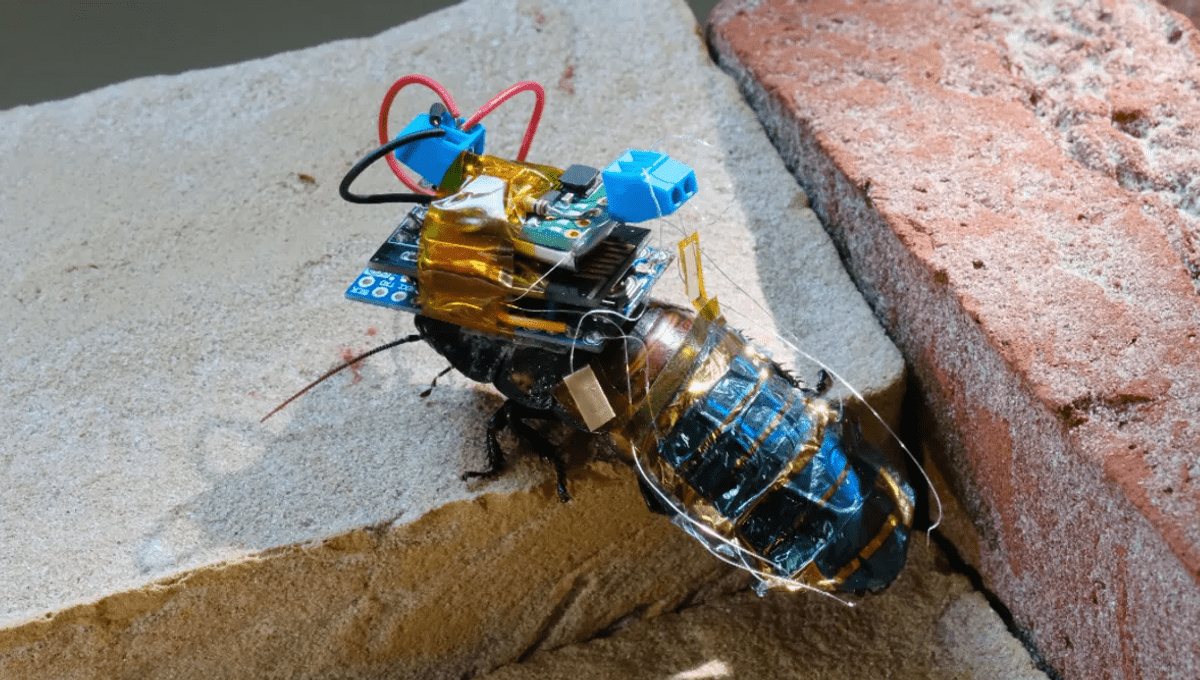
A rechargeable, remote-controllable robo-bug cockroach is the latest cyborg to come shuffling out of flexible electronics. The word salad for a cybernetic creation is thought to be a novel approach to urban search and rescue in creating a recon-ready cockroach that can be powered by the Sun (others are sniffing out explosives).
For a cockroach cyborg to be a good little search and rescue worker it needs to be able to take direction and, until we crack the linguistic code to Blattodea communication, achieving remote control is the best way to do that. As such, scientists created cyborg insects that were part roach, part machine that, with the aid of electronics, can be guided by a human pilot. But getting control is only half the battle.
The delicate and flexible electronics used to establish this control require power, and impressive though they may be there’s not a lot of room on a roach for storing a giant battery. Here, researchers on a new paper published to npj | Flexible Electronics got creative, instead looking to the Sun for a boost.
By creating tiny solar-power backpacks to be mounted on the cockroaches’ backs, the team has been able to create a setup that can maintain power under bright conditions. The onboard solar cell means there’s little risk of the cyborgs running out of juice partway through a mission.
Formulating a backpack that could fit onto a roach proved tricky, with the Madagascar cockroaches used in the study measuring just 6 centimeters (2.5 inches) long. But with the aid of ultrathin organic solar cell modules and a strong adhesive, the researchers were able to piece something together that was effective without limiting their movements.
Their device, which is created using a 3D printer and mounted on a cockroach’s thorax, outcompetes existing models for power and lasts for over one month.
“The body-mounted ultrathin organic solar cell module achieves a power output of 17.2 mW, which is more than 50 times larger than the power output of current state-of-the-art energy harvesting devices on living insects,” said lead research Kenjiro Fukuda of RIKEN CPR in a statement. And what’s more, the tech isn’t limited to just one insect.
“Considering the deformation of the thorax and abdomen during basic locomotion, a hybrid electronic system of rigid and flexible elements in the thorax and ultrasoft devices in the abdomen appears to be an effective design for cyborg cockroaches,” Fukuda explained. “Moreover, since abdominal deformation is not unique to cockroaches, our strategy can be adapted to other insects like beetles, or perhaps even flying insects like cicadas in the future.”
Is it a bird? Is it a plane? One day, it could be a search and rescue cicada.
Source Link: Scientists Create Cyborg Cockroaches Controlled By Solar Powered Backpacks